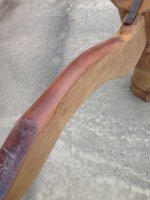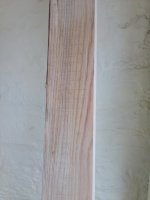Nippychippy said:Ha ha I would put in a plastic bottle but the post office will probably think it's a bomb
I got some earlier, tried it out, I can see why they put in the instructions that on dark wood test it carefully. Very very white residue left on there that I managed to wipe off, but it's still coming up as red. Tried it on some oak I have been readying for a bench too, and that came up looking lovely without wiping off.
Here are some photos.
[attachimg=1]
[attachimg=2]




